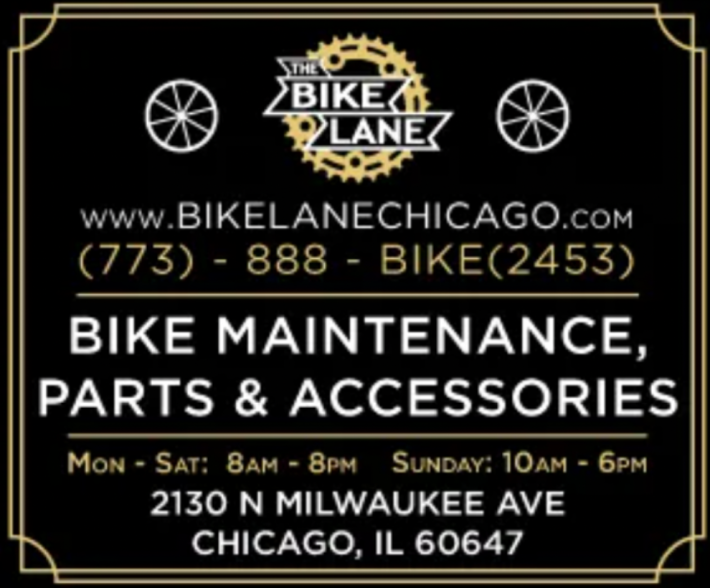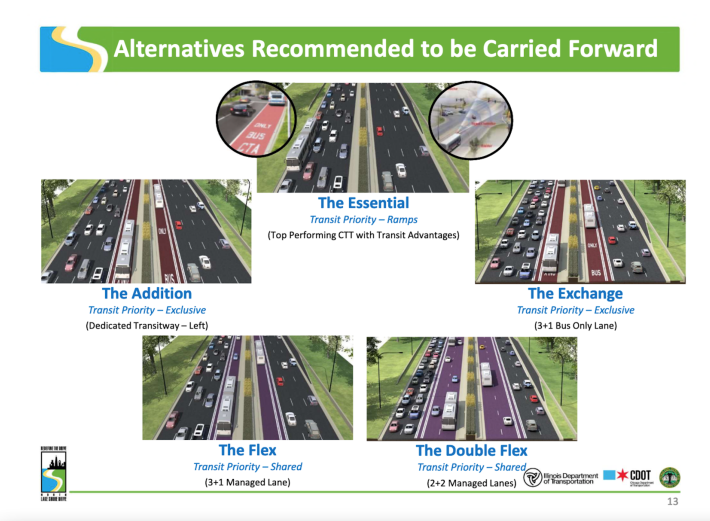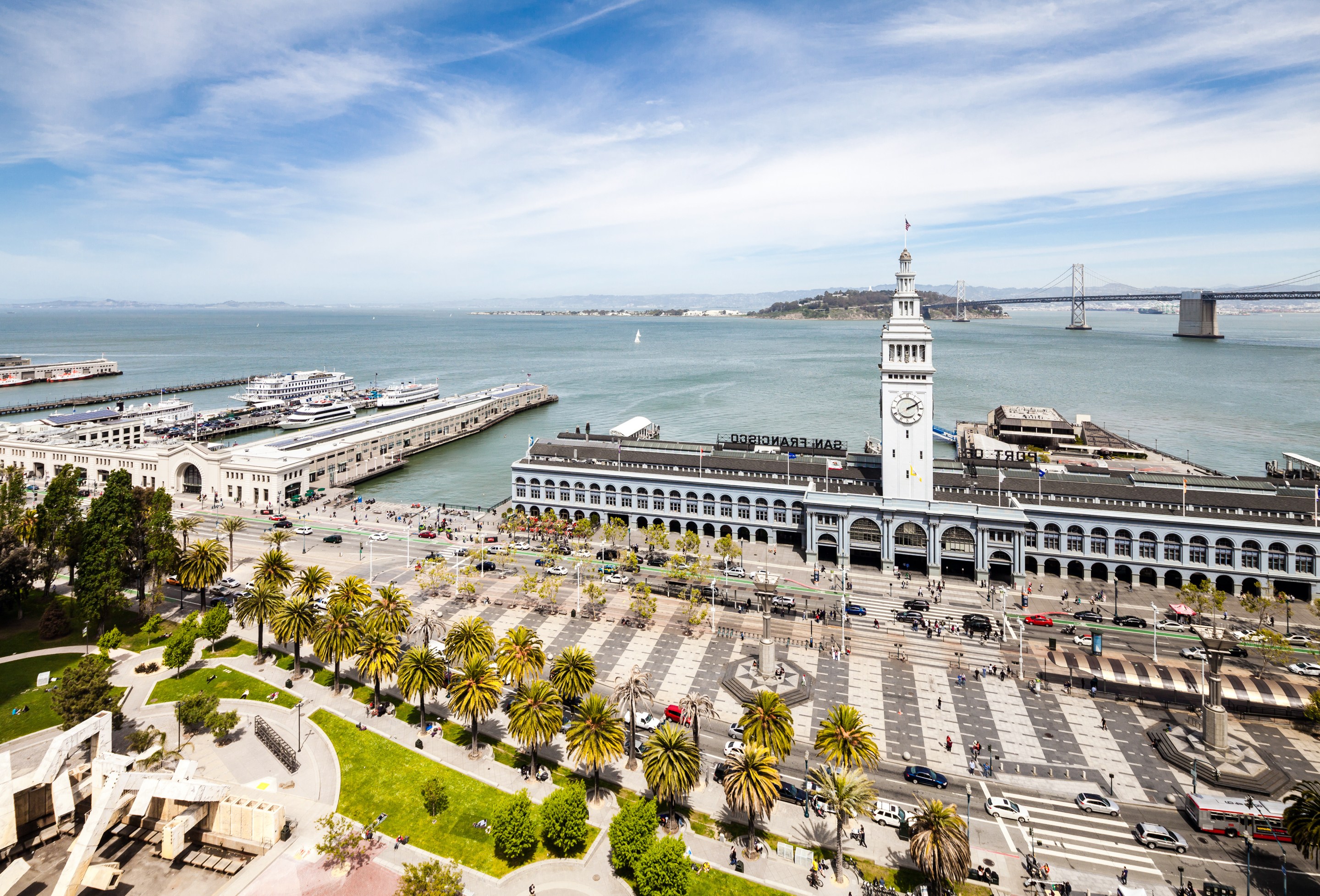
Last week Streetsblog discussed how Chicago, Bike Grid Now! teamed up with 14 alders, and other sustainable transportation and environmental groups, to lobby for a greener North DuSable Lake Shore Drive. They wrote to the Illinois and Chicago transportation departments, demanding that plans to rebuild the highway be overhauled, with less focus on moving cars, and more on making the lakefront better for walking, biking, and transit.
And earlier this month, four of the North Lakefront alders – Timmy Knudsen (43, Lincoln Park), Bennett Lawson (44, Lakeview), Angela Clay (46, Uptown), and Leni Manaa-Hoppenworth (48, Edgewater) ran an op-ed in the Chicago Tribune. The headline read, "Aldermen: Halt all work on the DuSable Lake Shore Drive project".
"Because of the trajectory of the project as an urban highway without significant mass transit elements, we are calling for a halt to planning events, public meetings and other work related to the project," the representatives wrote in the op-ed. "We believe the project would benefit from meetings with members of the City Council to discuss our oversight role as elected officials and our vision for DuSable Lake Shore Drive."
"This is our vision for DuSable Lake Shore Drive: a smaller, more efficient footprint that includes sustainable, multimodal 21st-century transportation solutions to accommodate all users and provide safe and easy access to our lakefront parks and other resources," the alders added in their Trib piece. "We oppose all versions of the proposal that fail to incorporate mass transit elements such as buses or light rail. We want modern solutions that prioritize non-car travel and put pedestrians, cyclists, public transit users, recreation, green space, commercial growth and property values ahead of cars."
The representative noted that while peer cities around the world are downsizing urban highways as a strategy to reduce traffic fatalities and fight climate change, Chicago is in danger of simply recreating the car-centric status quo. "A new DuSable Lake Shore Drive without a mass transit element is a nonstarter for us."
Last Friday, the Tribune published an editorial in response to the alders, originally titled, "A broadside against the plans for North DuSable Lake Shore Drive, but cars have to go somewhere". It was easy to predict the out-of-touch perspective of the right-leaning editorial board. The piece was illustrated with a cartoon by Scott Stantis, showing "[D]LSD Planners" forcing motorists to drive into the lake.
Making part of North DuSable Lake Shore Drive pedestrian only sounds like a good idea, but the cars have to go somewhere.
— Scott Stantis (@ScottStantis) June 15, 2024
Read the @chitribopinion editorial at https://t.co/DYSYRflXaf#chicagotribune #chicago pic.twitter.com/JgKt0cOycF
In reality, the planners of Redefine The Drive are primarily Illinois Department of Transportation officials. They've been pushing to preserve North DLSD as an eight-lane highway next to our beautiful lake, if not widening it to ten lanes.

Let's take a look at some of the Tribune editorial board's more absurd statements. "Chicago is the site of an intense, activist campaign to get people out of their cars and realign the city so transit and bikes will rule the roost," the piece argues. "It’s not just about adding capacity for those forms of transportation, which was the argument typically used in the past. It’s now just as much about disincentivizing driving and making it harder, and that’s what has been taking place with many Chicago streets seeing reduced capacity for cars through euphemisms such as 'traffic calming.'"
So they're maintaining that, rather than create more dedicated space for people walking, biking and riding transit, it's better to have overly wide roadways like DLSD? On such thoroughfares, when there isn't rush-hour congestion, speeding is the rule, resulting in tragically high numbers of serious and fatal crashes.
And here's another nonsensical line from the editorial. "Honesty requires acknowledging that the debate is strikingly one-sided because while bike and transit advocates articulate their points of view all over the media, car drivers don’t really have anyone representing their interests, beyond perhaps IDOT."
Besides the the state transportation bureau, which is running the DLSD project? There are lots of other entities working for "drivers' rights" in Chicago:
• The Chicago Department of Transportation: With the exception its Complete Streets wing, which creates sustainable transportation-friendly street designs, CDOT's meat-and-potatoes work is facilitating driving.
• The Chicago Metropolitan Agency for Planning: While the staff of the region's metropolitan planning agency is hip to sustainable transportation issues, its board and MPO policy committee are almost always in favor of highway expansion.
• The American Automobile Association, of course.
• Highway construction, asphalt, and concrete unions and lobbyists.
• The right-wing, pro-car Illinois Policy Institute.
• Citizens to Abolish Red Light Cameras.
• And let's not forget our otherwise-progressive Governor JB Pritzker, who has never met a highway expansion proposal he didn't like.
"It’s also worth noting that this anti-car radicalism is a tacit acknowledgement of the unexpected backlash against electric vehicles," the editorial insists. "The words 'electric cars' are nowhere in the aldermanic missive; cars are just cars... It's a shame."
Yes, electric vehicles create less urban pollution than gas-guzzlers. But, like regular vehicles, EVs still contribute to traffic crashes, congestion, and the land wasted on car parking. If all the motorists on DLSD nowadays were in electric cars, they'd still mostly be part of the problem, rather than the solution.
"Express bus lanes... would be great for anyone riding one of those buses and might well reduce the traffic overall," the editorial writers admit. "But the problem is the inevitable reduction in lane capacity and where those drivers would go."
Obviously, whoever wrote this piece is clueless about the phenomenon of "reduced demand" aka "traffic evaporation." That is, when you reduce highway capacity, people tend to choose alternatives to driving. The removal of San Francisco's Embarcadero Freeway is a good example of this phenomenon.

I could go on about more of the clueless statements in the Tribune piece. But but here's what Ald. Andre Vasquez (40), one of the signees of the letter to IDOT and CDOT, had to say in response to the editorial. "The piece in the Trib seems very antiquated in its critique. We are seeing that people want better public transit options and we have doubled in bike use in the city. We are just making sure to build a Chicago for the future, not to reinforce something that will become outdated in the next 50 years."
Active Transportation Alliance advocacy managerJim Merrell had this to say in response to the editorial. "People don't want a highway on the lakefront. It is really that simple. They want better transit and more ways to walk and bike to our beloved parks and beaches."
"We live in a vastly different world than we did ten years ago when [the Redefine the Drive] project kicked off," Merrell added. "Times have changed and the project's focus and approach have not kept up. We need to reset the conversation before we make a generational mistake of doubling down on an expressway next to our water supply."
Responded Chicago, Bike Grid Now! cofounder Nate Hutcheson, "We need a different kind of process that allows all Chicagoans to envision what kind of lakefront will help us thrive as a city now and in the future. Putting highway builders in charge of our lakefront will most definitely result in a highway-centric lakefront... I think the best thing [the Tribune editorial] said was the last sentence: 'The foundational question is whether this is what Chicago still wants.'"
Read the op-ed from alderpersons here.
For a laugh, read the Tribune editorial in response to the the alders' op-ed here.
Read letters in response to the Tribune editorial here.

Did you appreciate this post? Please consider making a tax-deductible donation to support Streetsblog Chicago's paywall-free sustainable transportation reporting and advocacy.





